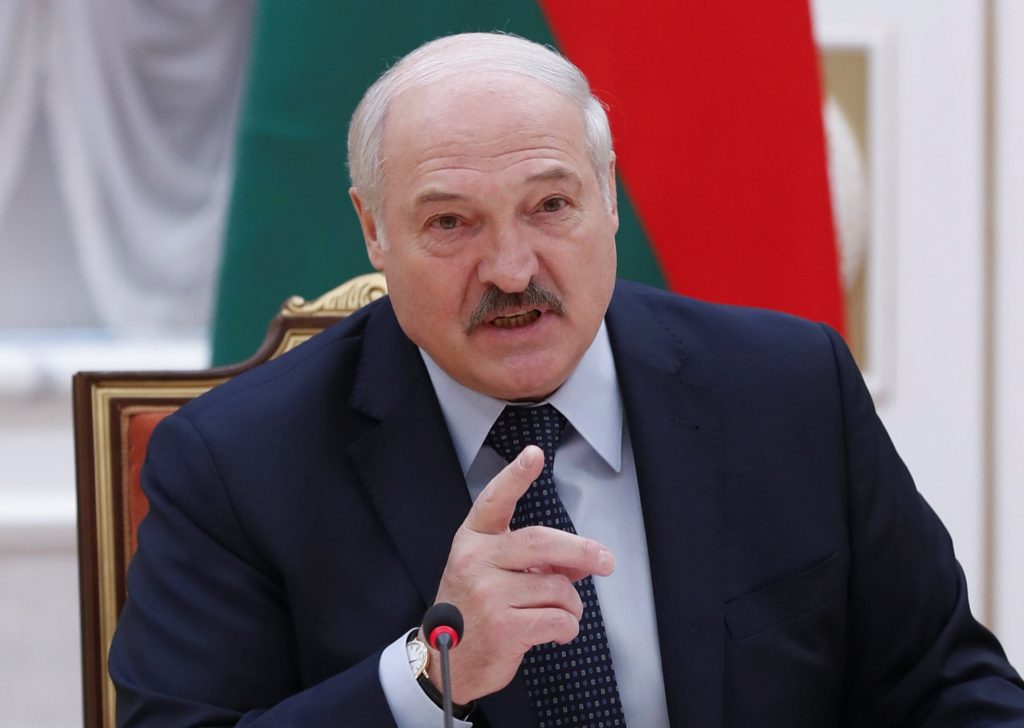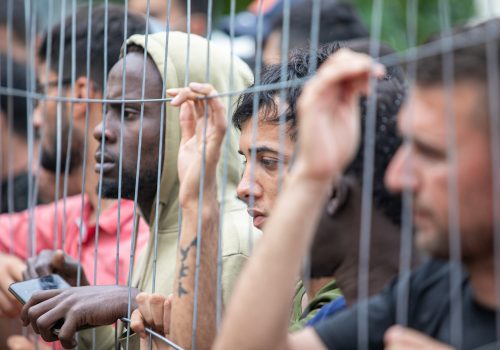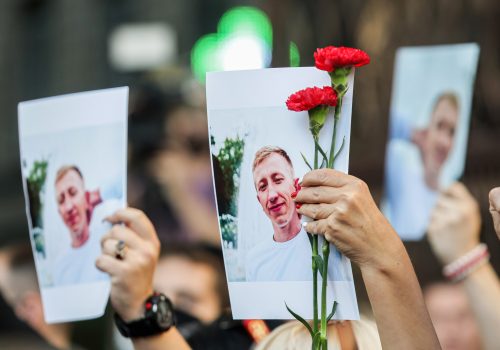On the sidelines of February 2015 Minsk peace talks seeking to establish a ceasefire in Ukraine’s Donbas region, a live microphone picked up a conversation between Belarus dictator Alyaksandr Lukashenka and the then Ukrainian President, Petro Poroshenko.
The two were discussing Vladimir Putin. “He’s playing a dishonest and dirty game,” Poroshenko said of the Kremlin leader, who was waging war in the Donbas and simultaneously posing as a peacemaker, effectively gaslighting everybody involved.
Lukashenka nodded sympathetically, replying, “I know, I know. Everybody realizes this.”
Fast forward six-and-a-half years to the present and Lukashenka has joined Putin in the “dirty dishonest game” and the gaslighting.
In a televised meeting with military officials in the Presidential Palace in Minsk on September 27, Lukashenka alleged, without evidence, that Ukraine was establishing training facilities for Belarusian exiles to overthrow his regime. He then claimed, also without evidence, that NATO was establishing bases in Ukraine.
“You see, they are dragging NATO troops there, to Ukraine. Under the guise of training centers, they are actually creating bases. The United States is creating bases in Ukraine. It is clear that we need to react to this,” Lukashenka said.
“The Russian president and I have held and are holding consultations on this issue and have agreed that some action should be taken there. Otherwise, tomorrow we will have an unacceptable situation right on the border between Belarus and Russia.”
As if on cue, Kremlin spokesman Dmitry Peskov said any NATO bases in Ukraine would “cross red lines.”
Lukashenka and Peskov made their remarks as regularly scheduled Rapid Trident military exercises were underway in Ukraine. The exercises, which include 300 US and 6,000 multinational troops training under the banner of NATO’s Partnership for Peace program, run from September 20 until October 1.
Lukashenka’s comments were the latest in a series of belligerent moves towards Ukraine. On September 13, he announced that Belarus was planning to deploy S-400 anti-aircraft missile systems, purchased from Russia, on the border with Ukraine, while claiming that the threat from the south “is heating up” and “we need to prepare.”
Belarusian State Border Committee Chairman Anatoly Lappo confirmed on September 27 that Minsk would continue to fortify the border with Ukraine. “You see how many training camps there are. Those are not boy scout camps. They are training the military there,” he alleged. “Naturally, there is only one goal, to train and then to arrive here in Belarus, with unknown goals.”
Eurasia Center events

The bellicose rhetoric and unsupported allegations against Ukraine reflect similar accusations Belarus has levied against Poland and Lithuania in recent months.
It also sharply contrasts with how Lukashenka positioned himself vis-a-vis both Ukraine and the West in the aftermath of Russia’s 2014 annexation of Crimea and armed intervention in the Donbas. In hosting the initial Minsk peace talks in September 2014 and February 2015, which included the leaders of Ukraine, Russia, Germany, and France and resulted in the current shaky ceasefire agreement, Lukashenka tried to pose as an honest broker between Moscow and Kyiv.
Lukashenka also pointedly refused to recognize Crimea as part of Russia and even ridiculed Moscow’s logic justifying the annexation, saying that Mongolia could just as easily lay claim to large swaths of Russian territory.
The Belarus strongman then carved out a neutral stance as the war in the Donbas escalated. In a direct reference to Ukraine, Lukashenka claimed he would never allow Belarusian territory to be used to attack another state, and made it clear that Belarus isn’t interested in being part of Putin’s so-called “Russian World.”
Bilateral relations between Minsk and Kyiv were so warm at around this time that when the Ukrainian and Belarusian national soccer teams played each other in Lviv in September 2015, their fans marched out together under banners reading “For Your Freedom And Ours” and “A Brotherhood Of Conscience.” They also belted out chants deriding Putin and gave blood together for wounded Ukrainian soldiers.
That, as they say, was then. And this is now.
Since the outbreak of mass anti-regime protests in Belarus in August 2020, Lukashenka has gone all in with Putin. Not only does this amount to a major change in the security equation along NATO’s Eastern flank, threatening the security of Latvia, Lithuania, and Poland, it also opens up a potentially deadly new front for Russia to menace Ukraine.
At a time when the United States is increasingly focused on the emerging threat from China, the threat level is also dangerously rising in the European theater and demands urgent attention from Washington and NATO.
Brian Whitmore is a Nonresident Senior Fellow at the Atlantic Council’s Eurasia Center, an Assistant Professor of Practice at the University of Texas at Arlington, and host of The Power Vertical Podcast.
Further reading
The views expressed in UkraineAlert are solely those of the authors and do not necessarily reflect the views of the Atlantic Council, its staff, or its supporters.

The Eurasia Center’s mission is to enhance transatlantic cooperation in promoting stability, democratic values and prosperity in Eurasia, from Eastern Europe and Turkey in the West to the Caucasus, Russia and Central Asia in the East.
Follow us on social media
and support our work
Image: Belarus dictator Alyaksandr Lukashenka has made a number of serious but unsubstantiated claims against Ukraine in recent weeks amid fears that he is ready to join Vladimir Putin's ongoing hybrid war against the country. (Sputnik/Alexander Astafyev via REUTERS)




